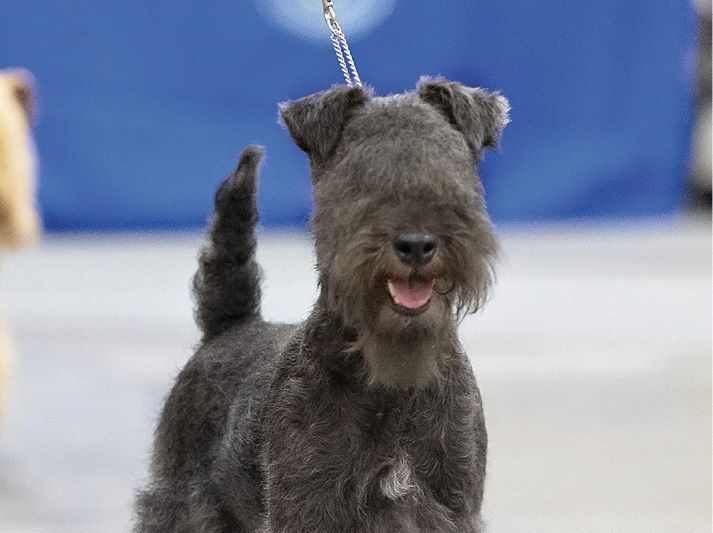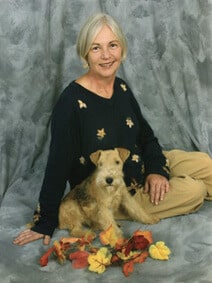
Home » Many Colors of the Lakeland Terrier Dog Breed
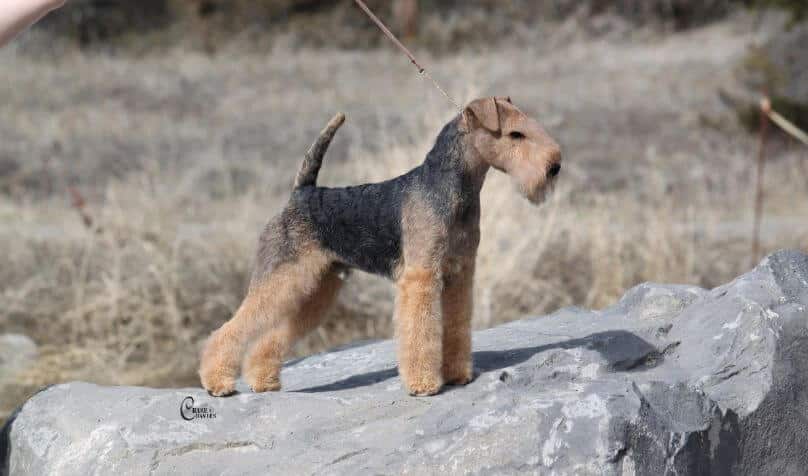
Lakeland Terriers come in more colors than any other Terrier breed; ten of them! Solid color black, blue, liver, red, and wheaten. Saddle-marked black and tan, blue and tan, liver and tan, black grizzle and tan, and red grizzle (born black and tan, but at maturity the black has receded so much as to be barely or not at all present).
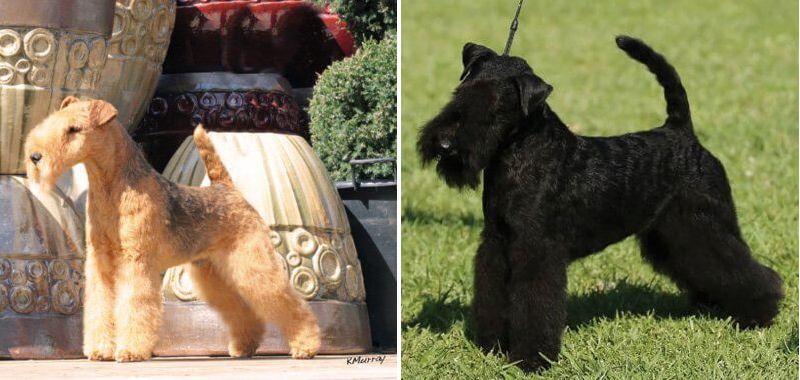
Each color is supposed to be valued equally according to the Standard, but like the song says, “Here in the real world…” Some of the colors are much harder to groom for the ring than others, and with blacks it is much harder to assess facial expression. Decades ago, I was attempting to finish the first black bitch ever in this country. Majors, like now, were scarce as hen’s teeth. With the bitch in top condition, I was hoping for the best when, whaddaya know, the lights went out in the show building and I thought, “No way.” But it was amazing. The handler was wearing a light pink suit, the other (saddle-marked grizzle and tan) dogs might have been wearing camouflage, and that black Lakeland was beautifully silhouetted in the gloom. The judge was a retired handler who was very knowledgeable in the breed, and the Lakeland finished that day.
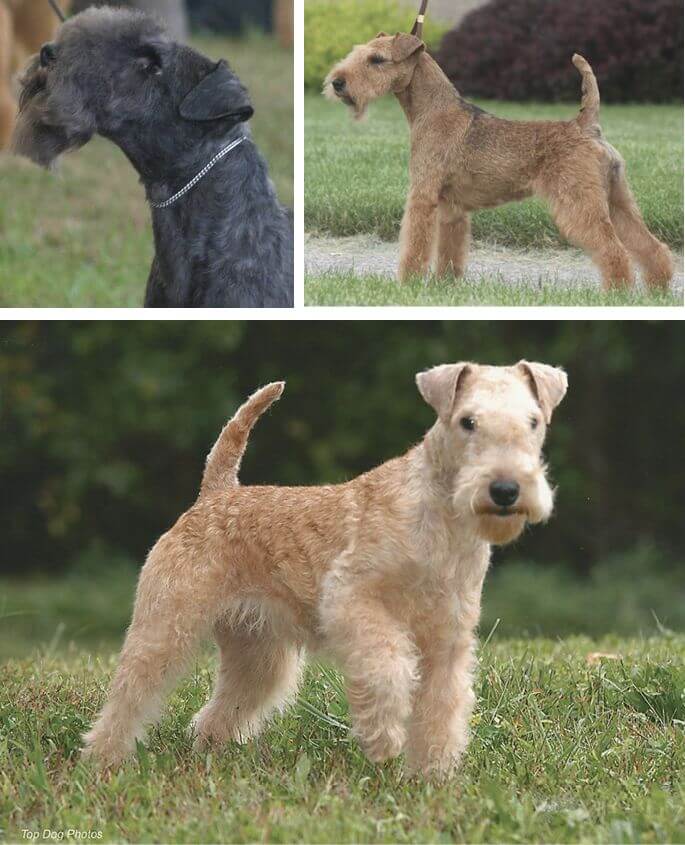
It can also be difficult to win with liver and tan Lakelands, especially when they mature to a significant level of grizzle (the progressive infiltration of the saddle with tan hairs). They can then look very similar to red grizzle individuals, but they have a brown nose and eye rims, and generally gold or amber eye color instead of brown, which is quite correct for a liver or liver and tan.
Lakeland Terriers have the narrowest band of color of any of the wire-coated, long-legged Terrier breeds.
No treatise on Lakeland color would be complete without mention of the banded nature of the hair. All the wire-coated Terriers have pale gray hair roots. (This is the reason that clippered dogs of these breeds generally become progressively lighter in color.) Lakelands have the narrowest band of color of any of the wire-coated, long-legged Terrier breeds. This makes their coat more challenging to present for show if you attempt to roll the coat. There is a tendency for it to “open up” and reveal the lighter roots (hence the custom of grooming for the ring with colored chalk). The furnishings can particularly become quite “moth eaten” in appearance without the meticulous staging of the hair so that there is absolute gradation of the length of the hair, producing even coloration. Again, encouraging the use of the colored chalk. This is against AKC rules, but sadly, I attended a seminar put on by AKC where one of the presenters brought in an Airedale that had been colored on one side only to show the judges the difference. The AKC representative, when questioned about the no color rule, said, “It’s your ring, you can allow what you want.”
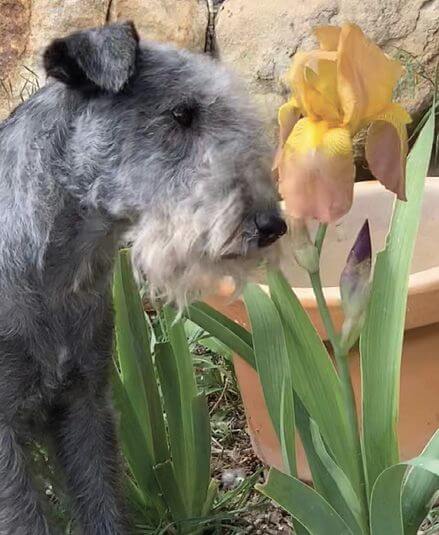
Blue and tan saddle-marked Lakelands are rarely seen. There are a few, but in the ring their saddle is most likely going to be chalked black. The dilute blue coat often (but not always) has texture better described as crisp rather than wiry, and with the banded nature of the leg furnishing hairs, achieving even color in a solid blue requires meticulous plucking—hair by hair. A properly put-down blue or blue and tan is a work of art!
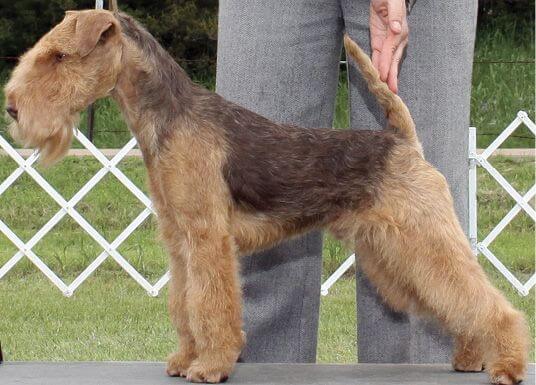
My closing thought is, “Doesn’t my breed at least deserve its own color chalk?” The Lakeland Standard calls for “wheaten or golden tan” head, throat, shoulders, and legs on saddle-marked individuals. Nowhere is there a mention of “Day-Glo” orange. Thankfully, fewer “Cheeto” -colored Lakelands are seen in the ring these days. It bears repeating: All allowed colors are equally acceptable. Nowhere in the Standard does it say “the best-groomed dog should win.” Conformation shows are intended to be just that: comparison of breeding stock to the written “standard of perfection.” Rarely are you going to see an entry in the classes where the individuals are so identical in conformation that perfection of grooming needs to be considered. All allowed colors are equally acceptable.
